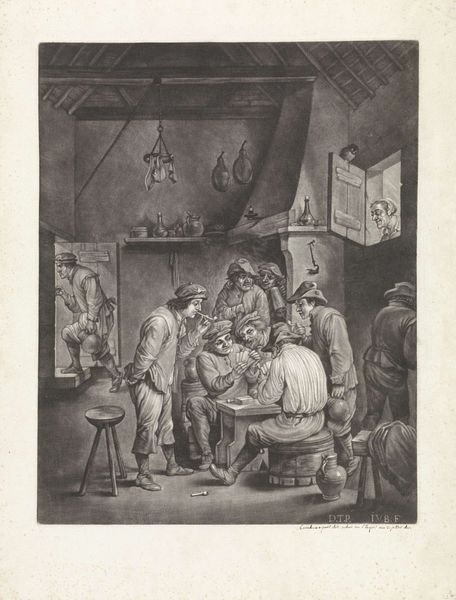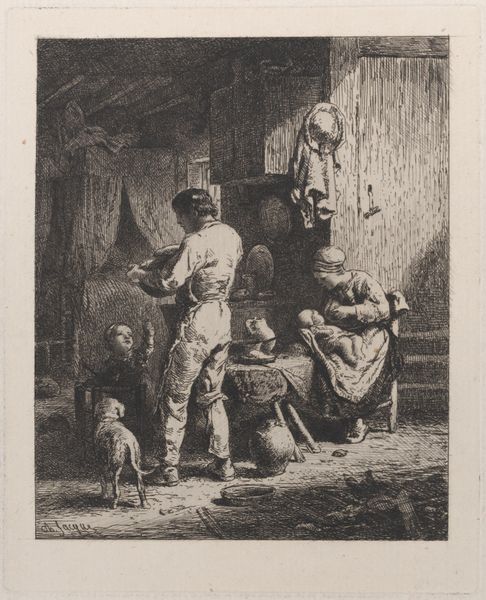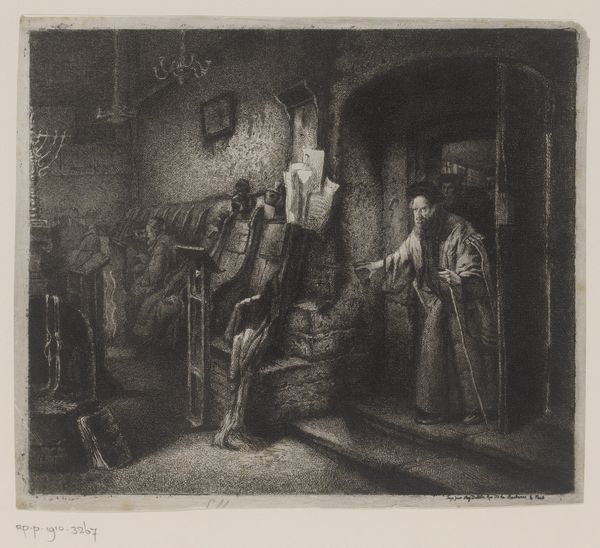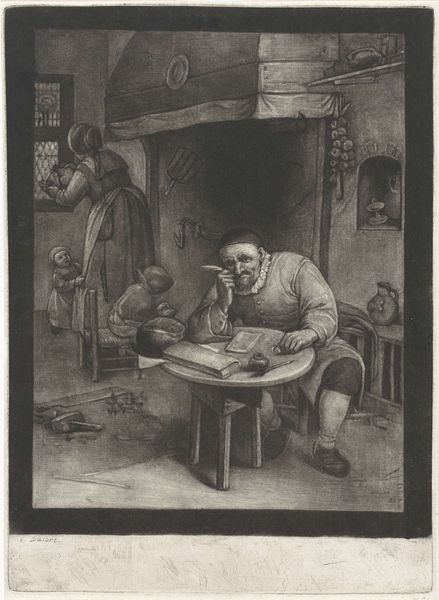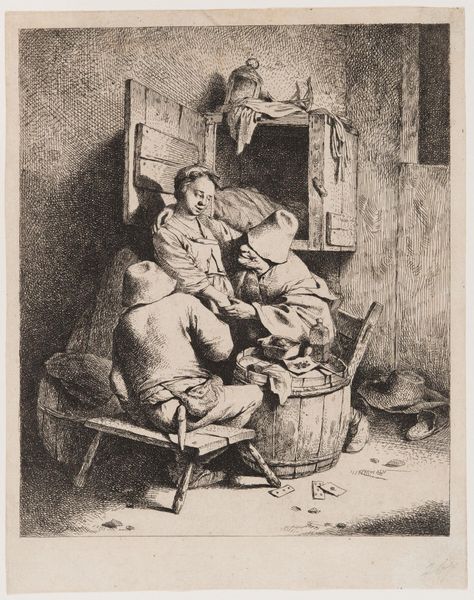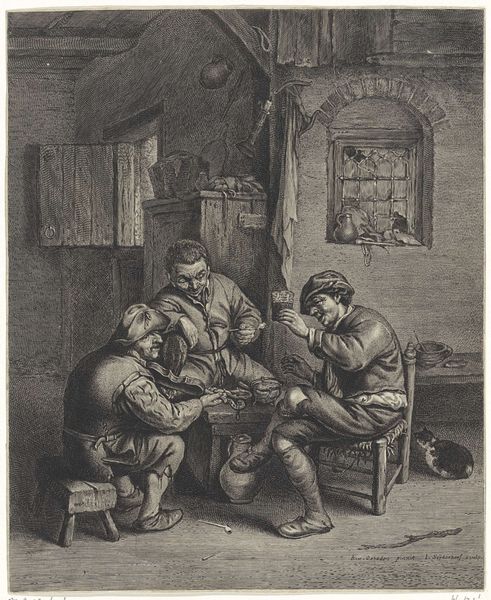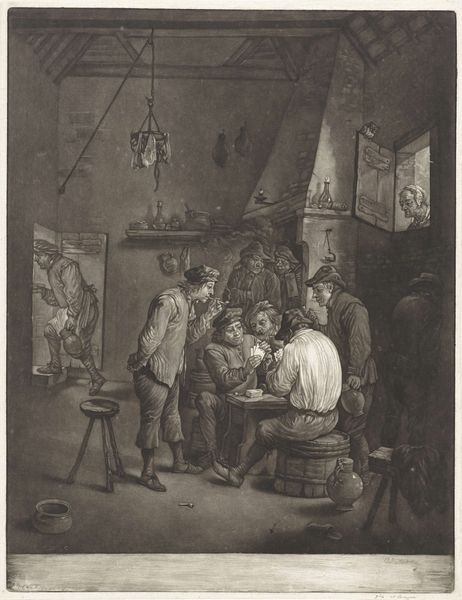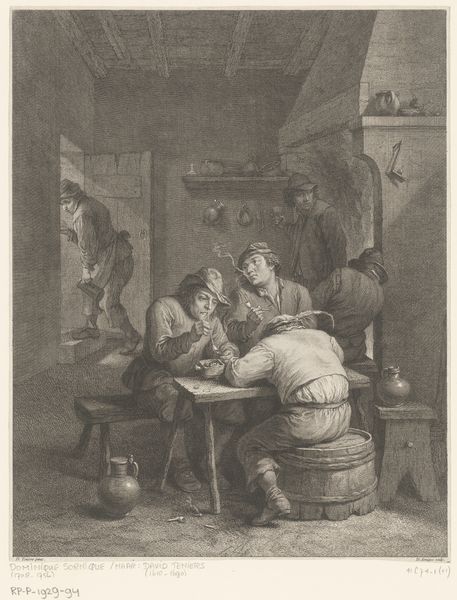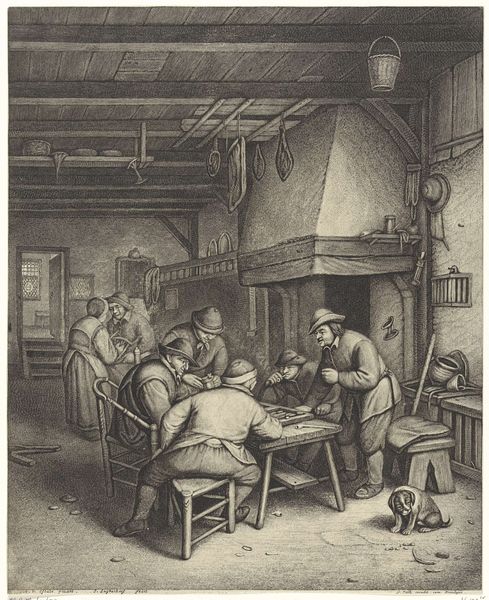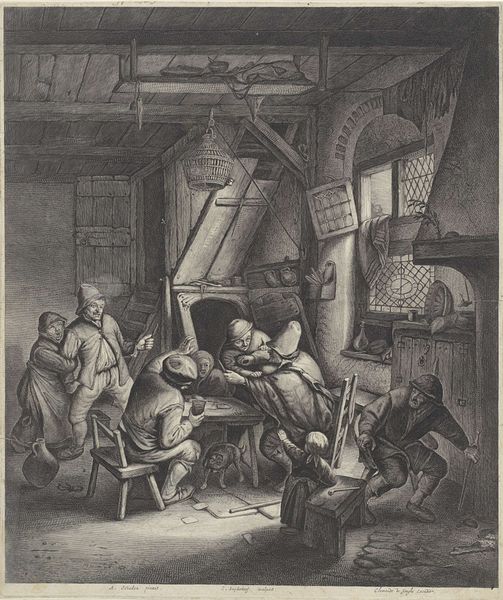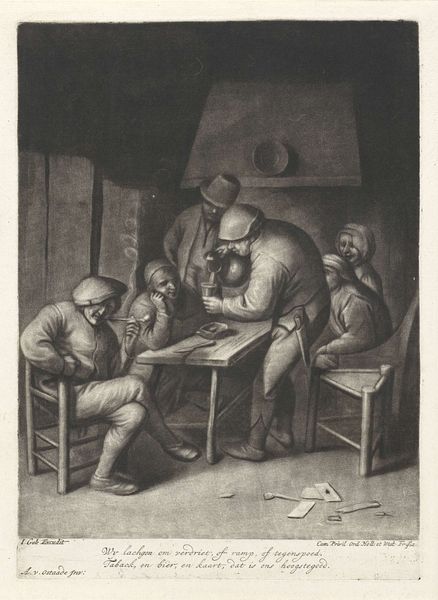
drawing, print, etching, graphite
#
drawing
#
narrative-art
# print
#
etching
#
charcoal drawing
#
graphite
#
genre-painting
#
academic-art
#
graphite
Dimensions: height 248 mm, width 229 mm
Copyright: Rijks Museum: Open Domain
Curator: What a fascinating scene of everyday life captured in this drawing by Anthonie van den Bos, dating roughly from 1778 to 1838. It’s titled "Rokende boeren bij een schouw," or "Smoking Peasants by a Hearth" if translated. Editor: The first thing that strikes me is the palpable sense of warmth and stillness. It feels… worn, used, comfortable. It makes me wonder about the working class and their methods and rituals of relaxation after long days of labor. Curator: Absolutely. It provides insight into the social history of labor and leisure during that time. It's worth noting that genre scenes like this also tell us about the social perception, almost a romanticizing of rural life by those with more resources who bought this art. There's an inherent commentary here on class and the division of labor. Editor: Looking at the etching and graphite, I see how the print medium plays a role in circulating images and therefore shaping perception. How were these drawings reproduced and distributed, and for whose consumption? And do you think the rustic aesthetic romanticizes working class exploitation for wealthier audiences? Curator: It does prompt questions about consumption, doesn’t it? These works certainly offered a sanitized vision of peasant life to an urban viewership, one that erased the hardships and amplified the quaint. Editor: Precisely! Consider the construction of “peasant” as an identity, viewed and consumed like any other commodity. The details, from the pipes to the hearth tools, highlight the importance of material culture in understanding labor and class. These were people working closely with objects and each other. Curator: Also think about how this image reflects the relationship between art and politics. What sociopolitical concerns of the period were reflected in its creation and consumption? Editor: Indeed. I also consider if the choice to depict men smoking promotes an aesthetic for laborers; and maybe that habit plays some symbolic role in labor’s leisure. I like that it acknowledges men from the labor force but also makes me wonder if these kind of depictions might be used to perpetuate gender norms of who composes it. Curator: The image gives us more questions to think about regarding this piece than answers. These scenes often serve to solidify social hierarchies and reinforce particular ideals about rural life, masculinity, and work. It shows us how depictions of peasants contributed to their broader cultural representation. Editor: Thanks to these considerations, I have a better understanding now, and the warm stillness I initially saw reveals far more complexity.
Comments
No comments
Be the first to comment and join the conversation on the ultimate creative platform.

